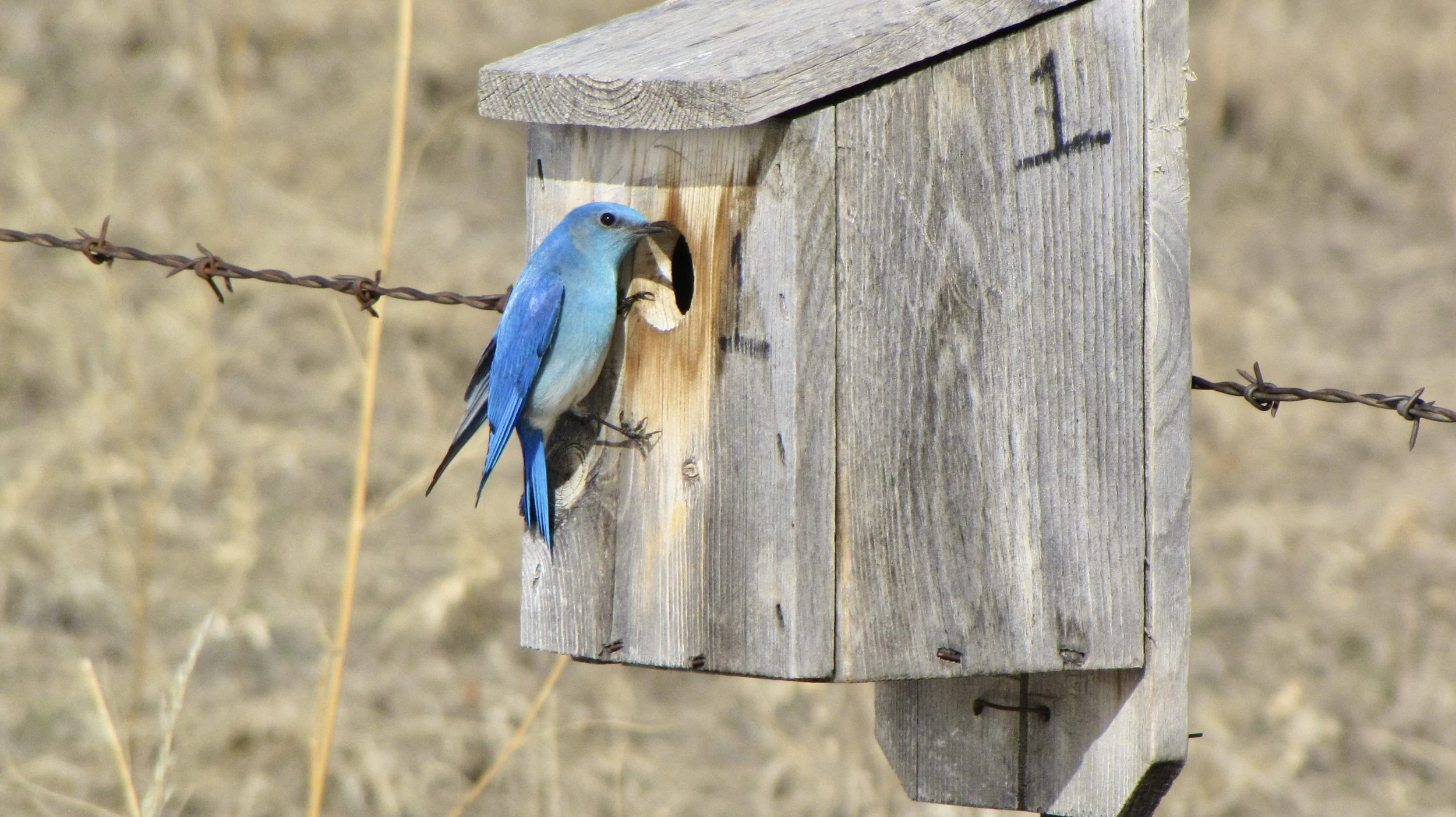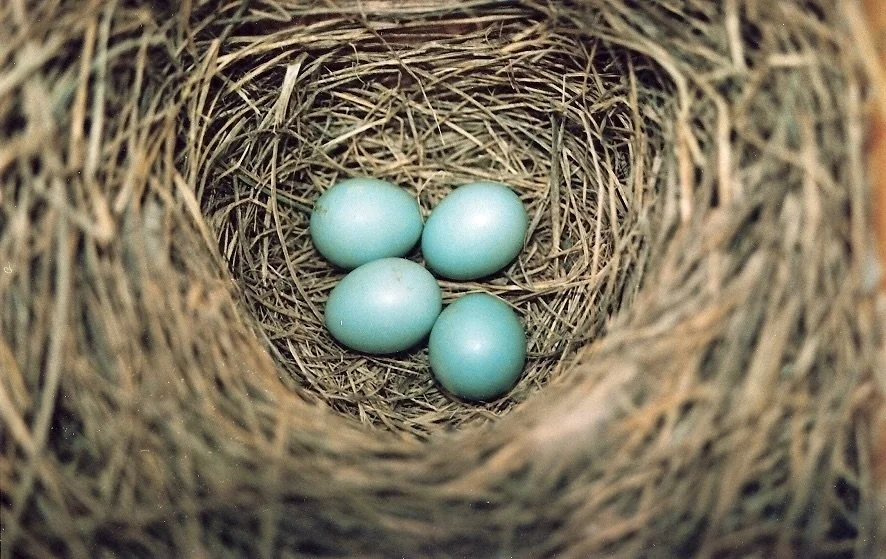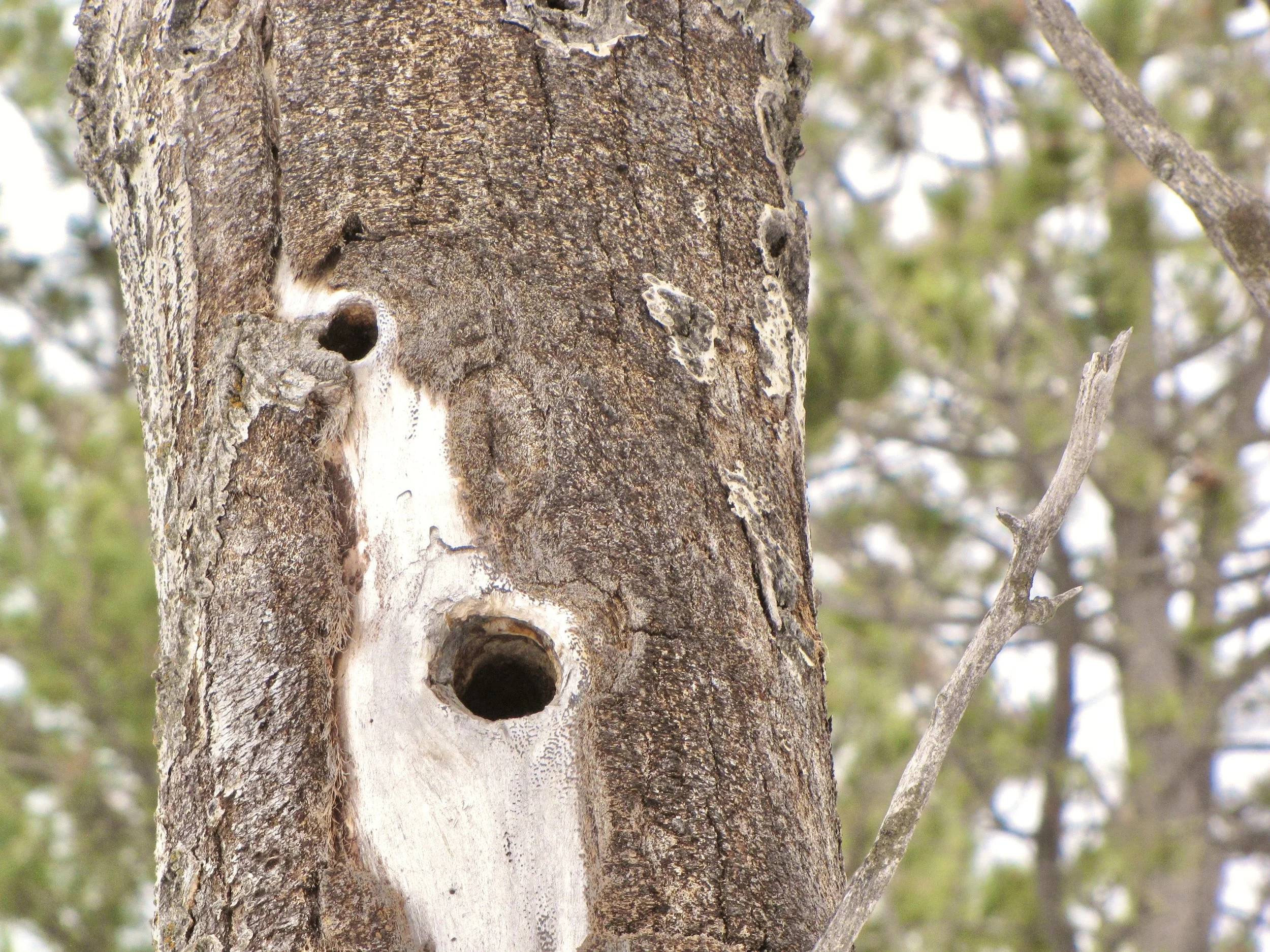Changing the Bluebird World One Box At A Time
Mountain Bluebird Trail
Around Montana
Written & Photography by Catharine Melin-Moser
It’s unlikely any other Montanan of the 1970s could have surpassed the late Art Aylesworth for the title, “Bluebird Man.” Art had an unbounded enthusiasm for a beloved springtime migrant of the bluebird. The story goes that one wintery spring day, Art and his wife, Vivian, observed a flock of male bluebirds perched in pine trees blanketed in snow near their home in Ronan.
“They look like big blue Christmas ornaments,” Art said.
It struck him that in recent years he was seeing fewer and fewer bluebirds. Using the specs published by the North American Bluebird Society, Art began a new pursuit - the undertaking of building nesting boxes. He convinced local sawmills to donate scrap lumber for box building and recruited his friends for help.
“When asked why he built nest boxes for bluebirds, Art replied, “Because they need our help.” ”
Initially securing five homemade nest boxes to trees or fence posts along the back roads of the Mission Valley, Art established a “bluebird trail.” As Art continued to add more boxes to the trail a tour from beginning to end required two hours of driving at a fast clip.
When asked why he built nest boxes for bluebirds, Art replied, “Because they need our help.”
All three North American bluebird species - the Mountain, Eastern, and Western, inhabit Montana. In 1974, Art founded the Mountain Bluebird Trails, an organization dedicated to the conservation of Mountain and Western Bluebirds. All bluebirds build their nests in cavities or holes, such as in a tree or birdhouse. Human activities including agriculture, logging, and the sprawl of housing developments in the early 1900s caused substantial losses of forests and meadows across America.
Since bluebirds lack strong beaks and other adaptations necessary to excavate their own nesting cavities, relying on nature’s expert excavators, the woodpeckers, to make homes for them. Non-native species such as House Sparrows and European Starlings, add to bluebird woes by competing for natural cavities, as do the native woodpecker, flicker, wren, and tree swallow. With the loss of natural cavities and competition for them, bluebird populations declined nationwide.
New generations of bluebird lovers riding the bluebird trail are advancing Art’s legacy. Prior to the northern migration of the male bluebirds’ arrival in Montana in late February or early March, bluebirders pack their vehicles with new boxes and a bag of tools to make their “maintenance run” to repair and replace the nesting boxes.
When the females arrive, typically later than the males, a male woos a female by singing for her and waving his wings. Once a female selects a mate, he guards the nest site while she constructs a nest made of grass. She lays two to seven sky-blue eggs and incubates them for at least 14 days. She broods the nestlings while her mate delivers crickets, moths, spiders, and other insect food.
After 21 days, the chicks fledge from the nest, going out on their own to try out their wings and learn to feed themselves. The youngsters stay close to their parents, but studies on bluebirds report a mortality rate as high as 75% within two weeks of fledging.
By October, the bluebird life cycle is complete. The birds gather in family groups, and their leisurely, buoyant flight takes them to warmer climates. Annual migrations can be perilous, too. Studies report a 15% mortality rate for migrating bluebirds.
While riding the bluebird trail, bluebirders are likely to brush up against the barbed-wire fastened to the metal post on which a box is wired, or splinters from the wooden posts, to which a box is fastened. Expecting this to happen, they are advised to wear old clothing. Bluebirders with trails in mountainous country get a leg stretching workout of dropping into the roadside borrow ditch and then climbing straight up the slope to reach the box.
After removing the roof, the bluebirder removes the old nest, disposing of it in a garbage bag. Old nests can hold such detritus as fecal matter, remains of chicks that died, or insect larvae. The parasitic larvae suck a chick’s blood, and sometimes will also infest an eye, leaving the chick blind and ending any hope of survival. In other scenarios, wasps and mice occasionally take up residence in a bluebird nest box.
Bluebirders clean up the messes. They also foster the birds’ welfare through educational talks, nest box building programs, and data collection. Grassroots bluebird conservation is among the largest conservation efforts in North America. The programs continue to be successful and popular because of people, past and present, who love the pretty bluebird.
For more information on bluebirds, or to establish a trail
Visit bluebirdtrails.org
Or call 406.822.3345




